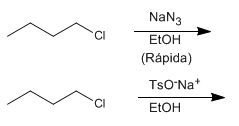Geben Sie für jedes der folgenden Molekülpaare (oder Reaktionen) an, welches schneller ablaufen wird. Begründe die Antwort.
a) 1-Brombutan oder 1-Iodbutan mit Natriumcyanid in DMSO.
b) 1-Chlor-2-methylbutan oder 1-Chlorpentan mit Natriumiodid in Acetan
c) 1-Chlorhexan oder Chlorcyclohexan mit Natriumiodid in Ethanol/Wasser.
d) Solvolyse von 1-Brom-2,2-dimethylpropan oder 2-Brom-2-methylpropan in Methanol
e) 1-Chlorbutan mit Natriumacetat in Essigsäure oder mit Natriummethoxid in Methanol.
f) 1-Chlorbutan mit Natriumazid in wässrigem Ethanol oder Natrium-p-toluolsulfonat in wässrigem Ethanol.
LÖSUNG:
a) 1-Iodbutan reagiert schneller, da Iod die beste Abgangsgruppe ist als Brom.
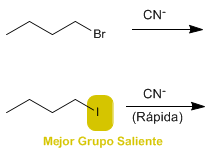
b) Verzweigungen an Kohlenstoff b verlangsamen SN2.
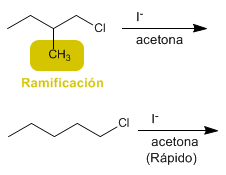
c) Das primäre Substrat (1-Chlorhexan) reagiert schneller als das sekundäre
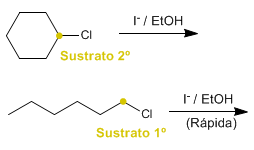
d) Tertiäre Substrate reagieren in SN1 schneller als primäre
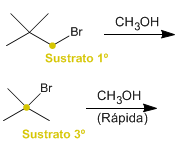
e) Methoxid ist ein besseres Nucleophil als Acetat und reagiert schneller.
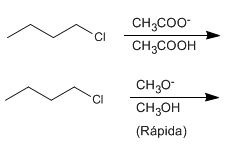
f) Das Azid-Ion, viel basischer und nucleophiler als Natriumtosylat, reagiert schneller.
